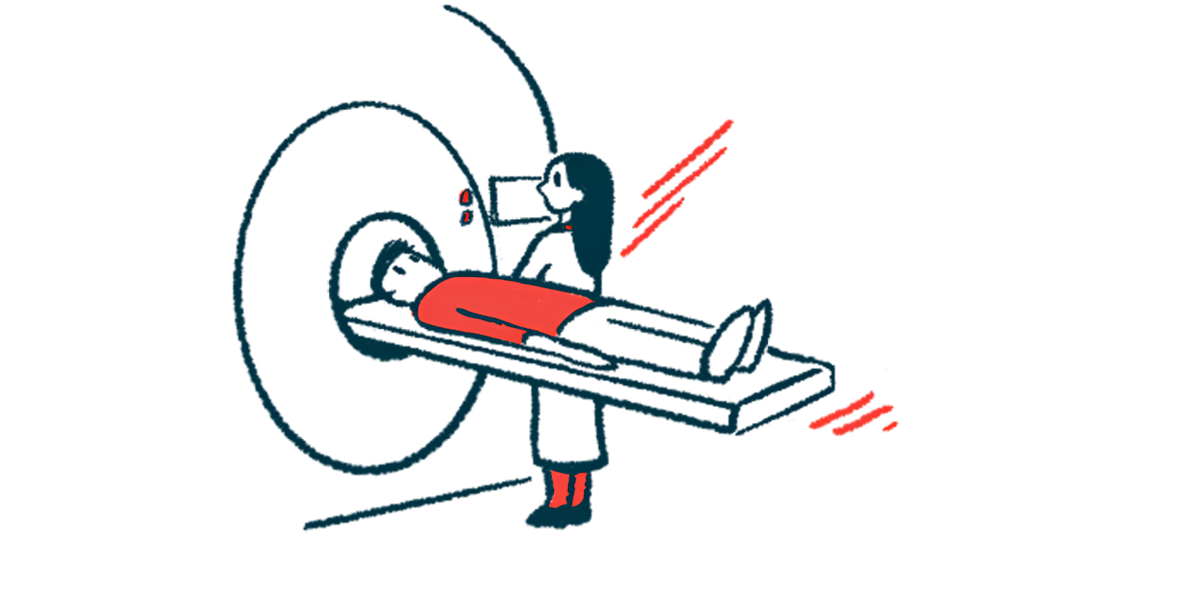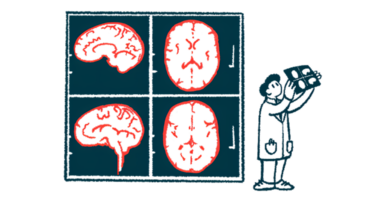MRI finding may reduce need for invasive spinal tap to diagnose MS
Study shows finding of CVS is sufficient to support diagnosis

A particular finding on an MRI scan, called the central vein sign (CVS), is sufficient to support a multiple sclerosis (MS) diagnosis without the need for an invasive lumbar puncture, a new U.K. study suggests.
The presence of six lesions with a CVS, where a vein is found running through the center of a lesion, has a similar diagnostic accuracy as a spinal tap that tests for oligoclonal bands (OCBs) — a type of MS antibody — in the spinal fluid.
“The findings of our research are particularly exciting as we have now shown that we can give the diagnosis of MS without this painful procedure,” Nikos Evangelou, MD, PhD, the study’s senior author and professor at the University of Nottingham, said in a university news story. “With the MRI scan, it takes 8 minutes, is completely safe, and then you can go home.”
The study, “Comparison of the Diagnostic Performance of the Central Vein Sign and CSF Oligoclonal Bands Supporting the Diagnosis of Multiple Sclerosis,” was published in Neurology Open Access.
In addition to the benefits for patients, the researchers think the advancement will lead to major cost savings by expediting diagnoses and avoiding complications that require care.
“On average, we think we will reach the diagnosis three months earlier and the change could save the [National Health Service] up to 5 million pounds each year, which can be reinvested in better services for our MS patients,” Evangelou said.
Criteria for MS diagnosis
Reaching an MS diagnosis can be challenging as there’s no definitive test to identify the disease. Clinicians rely on a combination of clinical, imaging, and laboratory findings, with the decision governed by a set of guidelines called the McDonald criteria, which was updated in 2017.
Per those guidelines, people who’ve had a bout of clinical symptoms suggestive of MS, called clinically isolated syndrome (CIS), must show that damage is happening in multiple places of the central nervous system (CNS, the brain and spinal cord) — a feature called dissemination in space — and at multiple points in time, or dissemination in time (DIT), to be formally diagnosed.
The former can be met when MRI scans show lesions characteristic of MS in multiple regions of the CNS. DIT can be proven by a second disease relapse or new signs of damage on MRI scans, but these can be replaced by the presence of OCBs, or antibodies that suggest CNS inflammation.
OCBs are measured in a sample of spinal fluid collected with a lumbar puncture, where a thin needle is inserted into the spinal canal. But these antibodies aren’t 100% universal in MS and can be seen in other inflammatory diseases. Moreover, lumbar punctures are invasive, painful, and can lead to complications that require additional monitoring or hospitalization.
Recently proposed modifications to the McDonald criteria would let MS be diagnosed even if DIT isn’t present, provided other criteria are met. One of these would be CVS — an MRI finding believed to be specific to MS. In particular, the proposed criteria would follow the so-called “rule of six,” where at least six lesions need to be found around a vein in imaging scans.
CVS vs. OCBs
The DECISIVE clinical trial (NCT05533905) explored the diagnostic utility of CVS versus OCBs among adults with typical CIS. As part of it, 99 people in the U.K. underwent a MRI scan and a lumbar puncture. After an evaluation a year and a half later, 80 were diagnosed with MS, 10 were considered to have CIS, eight were diagnosed with a different condition, and one remained undiagnosed.
CVS, established either with the rule of six or when at least 40% of evaluated lesions had a central vein, had similar diagnostic sensitivity as OCB, accurately predicting about 84%-91% of definite MS cases. CVS wasn’t as specific as OCBs, however, meaning it was more likely to call a case MS when it wasn’t. Still, the approaches had similar total diagnostic accuracy.
Side effects were more common after a lumbar puncture (75%) than a MRI (9%), and some people (15%) needed time off work or their usual responsibilities to recover after a lumbar puncture. A small group of participants interviewed all preferred the MRI.
The findings support CVS as a diagnostic test for centers that have the appropriate MRI equipment, the researchers said.
“We expect that the overall number of patients requiring diagnostic [lumbar puncture] will reduce, thereby reducing the burden for patients and costs of health care services,” they wrote.






